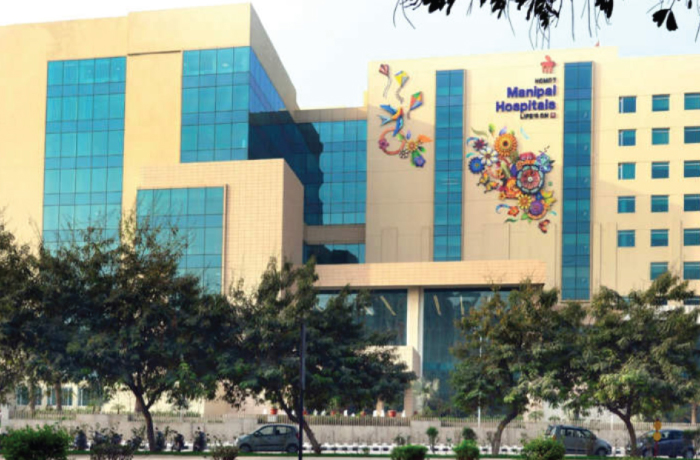General Surgery
Central Venous Access
Central Venous Access
Get expert Central Venous Access care with GetWellGo. Trusted international medical services, advanced procedures, and support for patients worldwide.
Central venous access is the insertion of a catheter into a major central vein (typically in the neck, chest or groin) in order to achieve consistent access to the blood stream. It is also commonly in situations where patients need long-term intravenous therapy or rapid fluid replacement as well as central venous pressure monitoring.
What is Central Venous Access?
Central venous access refers to the placement of a central venous catheter (CVC) in a major vein usually internal jugular vein, subclavian vein, or femoral vein. It does not involve usage of peripheral IV lines as it provides access directly to central circulation to perform specialized treatment.
Indications
- Treatment with vasoactive medications, chemotherapy, antibiotics or parenteral nutrition.
- Fluid and blood product infusion in case of an emergency.
- Hemodynamic (central venous pressure, mixed venous oxygen saturation)
- Plasmapheresis or Hematodialysis.
- Inadequate accessibility of the peripheral veins.
Sites of Insertion
- Internal jugular vein (commonest; can be ultrasound guided)
- Subclavian vein (good long-term patency although with increased risk of pneumothorax)
- Femoral vein (easy approach, but with greater risk of infection/thrombosis)
Benefits
- Stable and permanent venous access.
- Safety in the administration of irritant or vesicant drugs.
- Can be used in the case of critically ill patients and cancer treatment.
Central Venous Access Procedure
The following is a simple and an organized description of the Central Venous Access Procedure:
Preparation
- Patient evaluation: Pointers, contraindications, coagulation profile.
- Consent: describe risks, benefits, options.
- Observation: Pulse oximetry, ECG, blood pressure.
- Aseptic hand technique: Full barrier precautions (mask, gown, gloves, drapes)
- Material: Central venous catheter set, ultrasound, sterile flushes.
Patient Positioning
- Internal jugular / subclavian vein: Supine, Trendelenburg (15-20° head-down) to distend veins and minimize risk of air embolism.
- Femoral vein: Supine, leg high abducted and out-rotated.
Site Selection
- As internal jugular vein (preferably, ultrasound-guided)
- Subclavian vein (good long-term but increased pneumothorax)
- Femoral vein (raiser, yet more infected)
Local Anaesthesia
-
Lidocaine 1% infiltrated.
Insertion Technique (Seldinger Method)
- Insertion of needles - Under ultrasound guidance, the advancement of the needle should be done until the venous blood is aspirated.
- Guidewire insertion- Insert the needle through the vein with the guide wire.
- Removal of needles - Take out needle, leaving guidewire
- Dilator insertion -Insert dilator over guidewire, then withdraw dilator.
- Placing of catheters- Pass the central venous catheter through the guide wire.
- Guidewire withdrawal - Removal of guidewire whilst maintaining the catheter.
- Secure catheter- Suture or adhesive device; place sterile dressing.
- Flush lumens- Ascertain free aspiration and flushing of all ports.
Confirmation
- Chest X-ray (to rule out pneumothorax) to ensure that the tip lies in the superior vena cava (SVC).
- Real-time confirmation some settings with ultrasound / fluoroscopy.
Post-procedure Care
- Periodically examine the area of insertion as to infection or bleeding.
- Maintain sterile dressings.
- Flush pipe to avoid the formation of a clot.
- Follow up (complications: fever, swelling, dyspnea, arrhythmias).
Central Venous Access Types
The following is a description of the various central venous access types, their nature and common applications:
Non-Tunneled central venous catheter (CVC)
- Description: The straight catheter that is introduced directly into a central vein.
- Time: Short term (days to weeks)
- Menstrual Sites: Internal jugular veins, subclavian, femoral veins.
- Applications: ICU, emergency, fluid resuscitation, medications, monitoring.
- Merits: Multiple lumens, fast, easy.
- Higher risk of infection, thrombosis, accidental puncture of arteries.
Tunneled Central Venous Catheter (e.g., Hickman, Broviac)
- Description: This is a catheter that is tunneled under the skin and then inserted into a central vein, occasionally with a cuff to avoid infection.
- Time: Long (weeks to months)
- Usual Sites: Subclavian or internal jugular vein.
- Applications: Chemotherapy, long term IV antibiotics, parenteral nutrition.
- Merits: Reduced chance of infection as compared to non-tunneled and long-term access.
- Risks: Surgical insertion was needed, thrombosis, infection.
Implantable Port (Port-a-Cath)
- Description: Got a full implant under the skin; there is a catheter that runs into a central vein; it was accessed by means of a special needle through the skin.
- Time: Long (months-years)
- Typical Locations: Over chest wall over pectoral muscle.
- Applications: Chemotherapy, long term drugs, intermittent IV therapy.
- Benefits Minimal maintenance, reduced risk of infections, concealed beneath the skin.
- Contraindications: Surgical placement, needling discomfort, thrombosis.
Peripherally Inserted Central Catheter (PICC Line)
- Description: Placed in arm periphery, pushed in central vein (typically SVC).
- Time: Intermediate to long term (weeks to months)
- Common Sites: Basilic, cephalic or brachial veins.
- Uses: Antibiotics, diet, medications in the long run.
- Benefits: Insertable at bedside, reduced the risk of pneumothorax.
- Risks: catheter occlusion, Thrombosis, infection.
Dialysis Catheter
- Description: Large bore and high volume catheter that is specifically used in hemodialysis.
- Time: Temporary (acute) or long-term (chronic).
- Characteristic Sites: Internal jugular, femoral, subclavian veins.
- Applications Hemodialysis or plasmapheresis.
- Benefits: Dialysis is at high flow rate.
- Risks: Infection, thrombosis, stenosis, to dialysis only.
Factors Affecting Central Venous Access Surgery Cost in India
The most important factors influencing the cost of central venous access (CVA) procedures / surgery in India are:
What central venous access procedures entail cost-wise?
The costs of CVA are:
- Cost of device / catheter (material)
- Surgeon, anaesthetist procedure charges
- Operating room / OT time
- Imaging / guidance (ultrasound, fluoroscopy, X- ray)
- Consumables (sterile clothes, dressings, suture, guidewires, etc.)
- Hospital admission / bed costs (in case inpatient) / recovery room.
- Pre-procedure (lab tests, imaging) diagnostic tests.
- Follow up / maintenance (dressings, flushes, replacement where necessary)
- Treatment of complications (infection, thrombosis, etc.)
Conclusion
Central venous access (CVA) is a medical procedure that is critical in the administration of vital medication, nutrition, dialysis, and long term treatment when peripheral access is inappropriate. CVA surgery in India also can be highly variable in terms of price, which depends on several factors including the kind of catheter employed, the hospital type, city, the expertise of the specialists, imaging guidance, the hospital stay, and post-surgery care. Whereas simple non-tunneled catheters are affordable, tunneled lines, chemo ports, and dialysis catheters can be very costly in terms of the cost of the device and the complexity of the surgery.
Central Venous Access in India with GetWellGo
GetWellGo is regarded as a leading supplier of healthcare services. We help our foreign clients choose the best treatment locations that suit their needs both financially and medically.
We offer:
- Complete transparency
- Fair costs.
- 24 hour availability.
- Medical E-visas
- Online consultation from recognized Indian experts.
- Assistance in selecting India's top hospitals for Central Venous Access treatment.
- Expert doctor with a strong track record of success
- Assistance during and after the course of treatment.
- Language Support
- Travel and Accommodation Services
- Case manager assigned to every patient to provide seamless support in and out of the hospital like appointment booking
- Local SIM Cards
- Currency Exchange
- Arranging Patient’s local food
FAQ
1. Which is the cheapest option for central venous access?
- The cheapest is a non-tunneled central venous catheter installed in an intensive care unit or in a general ward. Long-term equipment such as PICC lines, chemo port, and tunneled catheters increase the costs.
2. What kind of central venous access is the most cost-effective in the long run?
- Non-tunneled CVC or PICC lines are economical in the short-term requirements. In cases of long term treatments such as chemotherapy or dialyses, a tunneled catheter or implantable port can be more cost-effective even though it is more expensive initially, as it lowers the number of complications and replacements required.
3. What is the reason behind such variation in the cost of central venous access?
- This diversity is based on the type of device, the location of the hospital, the expertise of the specialists, the use of imaging instructions, a hospital, and other services such as dressing, toilet flushing, and aftercare.
TREATMENT-RELATED QUESTIONS
GetWellGo will provide you end-to-end guidance and assistance and that will include finding relevant and the best doctors for you in India.
A relationship manager from GetWellGo will be assigned to you who will prepare your case, share with multiple doctors and hospitals and get back to you with a treatment plan, cost of treatment and other useful information. The relationship manager will take care of all details related to your visit and successful return & recovery.
Yes, if you wish GetWellGo can assist you in getting your appointments fixed with multiple doctors and hospitals, which will assist you in getting the second opinion and will help you in cost comparison as well.
Yes, our professional medical team will help you in getting the estimated cost for the treatment. The cost as you may be aware depends on the medical condition, the choice of treatment, the type of room opted for etc. All your medical history and essential treatment details would be analyzed by the team of experts in the hospitals. They will also provide you with the various types of rooms/accommodation packages available and you have to make the selection. Charges are likely to vary by the type of room you take.
You have to check with your health insurance provider for the details.
The price that you get from GetWellGo is directly from the hospital, it is also discounted and lowest possible in most cases. We help you in getting the best price possible.
No, we don't charge patients for any service or convenience fee. All healthcare services GetWellGo provide are free of cost.
Top Doctors for General Surgery
Top Hospitals for General Surgery
Contact Us Now!
Fill the form below to get in touch with our experts.







